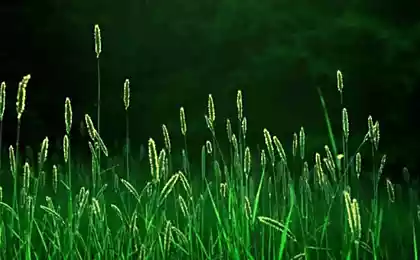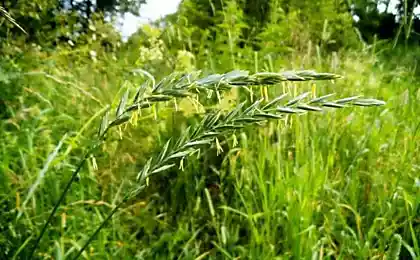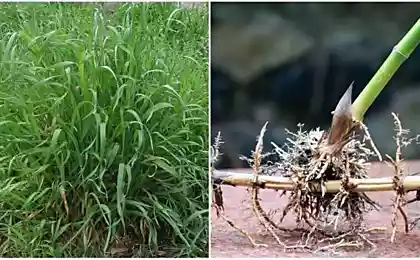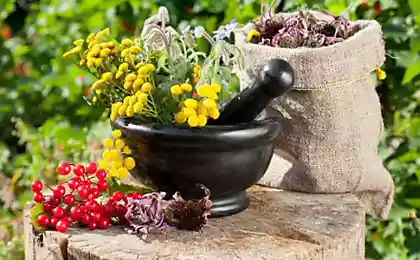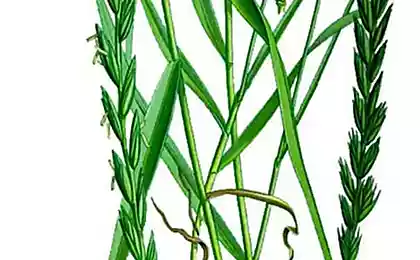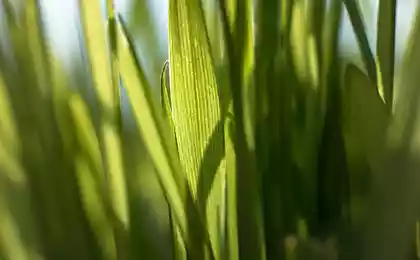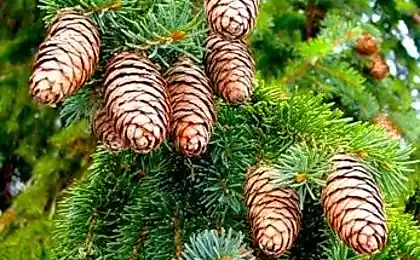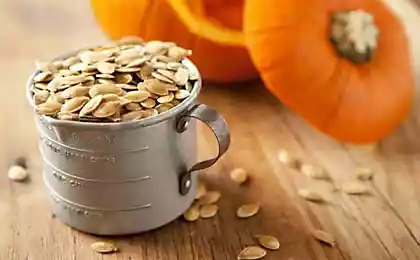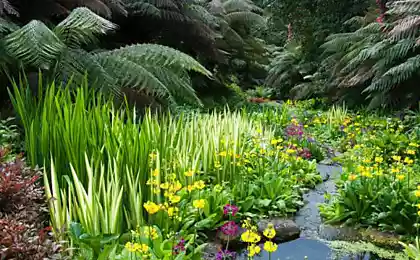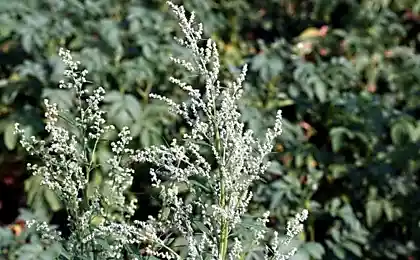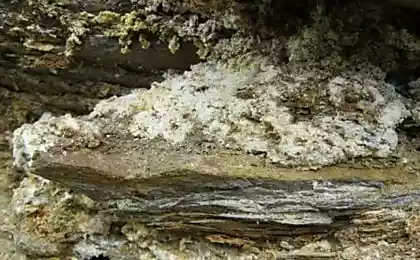472
Wheatgrass: the Incredible healing properties that few people know
Seventy four million eighty two thousand five hundred seventy three
Common names: root-grass, dog-grass, worm-grass, Wheatgrass, the dog's tooth, ITEC, ponyri, ranec, ITEC, ortanez, dander.
Wheatgrass (lat. Elytrígia) — a perennial herb; genus of the family Gramineae, consisting of about 100 species.Wheat grass blooms in may-June, fruits in July-September. This plant is found throughout Europe, Asia, avoiding only the deserts and dark forests, although it can grow in forest clearings and edges, but mostly Wheatgrass inhabits meadows, fields, fallow lands, gardens. Its modern Latin name Elytrigia repens.
In medicine, the Wheatgrass used in metabolic disorders, as a diuretic, diaphoretic, expectorant and laxative, regulates salt metabolism means.
The main applications of wheat grass – cleansing of the blood when increased outflow of water from the body removes toxins that impact primarily in reducing skin rashes. Fatigue and state fatigue removable. All the components work together, as vitamins and minerals, saponins and related compounds.
Although the scientific medicine treats the Wheatgrass cool, in Switzerland, for example, it is widely used as a medicinal plant. Due to the presence of silicic acid, it is used in diseases of the bronchi, problems with metabolism, rheumatism and gout.
NHS Germany the following indicates the scope of the rhizomes of a wheat grass: for increased urination in inflammatory processes in the urinary tract; as an additive in the treatment of catarrh of the upper respiratory tract.
The most important indications for the use of couch grass couch grass rhizomes in traditional medicine is anemia, rickets, lung diseases, urine retention, disease of the liver and gallbladder, inflammation of the stomach and intestines, rheumatism, gout, skin rashes and complaints related to menstruation. Very good tea with wheat grass and bearberry anti-acne.
In Russia the most known species is couch grass, which covers gardens, vacant lots, gardens, forest edges, fields, meadows, etc.
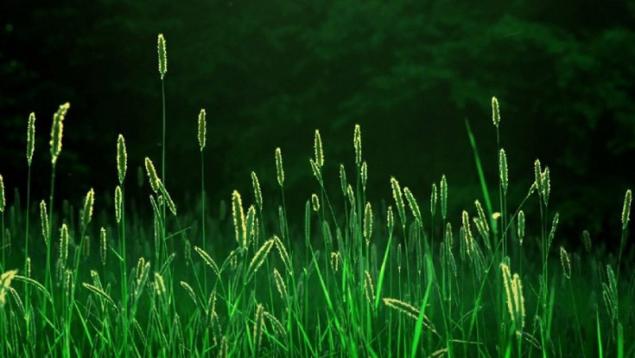
Wheatgrass as a food plant not just helped people in the most difficult times. Rhizome is used for food of wheat grass. Its milled to get flour, which is nutritionally not inferior to wheat, and bake bread, cakes, cookies and other flour products. From the dried rhizomes can be cooked cereals for cereals, condiments, casseroles, stuffings and fillings, which will differ pleasant taste and aroma. Fresh roots boiled soups, prepare salads and garnishes for fish, vegetable and meat dishes. From the roasted roots can be prepared coffee drink.
Quack grass is a known and common weed of gardens. All weed plants have incredible vitality and fertility. Wheatgrass has a long rhizome, which, if cut into pieces, where there is at least one living kidney immediately takes root and begins to form a new independent plant. Hence its common names -- ITEC, ITEC, ortanez. It is literally "fire" for fields and gardens, which is extremely difficult and often unsuccessful.
Perhaps this persistence of plants, even weeds, could not affect its ability to contend not only with problems in the middle, but the far circle, and including problems of health.
Wheatgrass though is "cores" of Mother earth, which he poured in his miraculous power for healing and the lives of their children. Pets, cats and dogs, in the early spring are happy to eat young grass of the Wheatgrass. So they replenish their starving over the winter the blood with fresh vitamins and biologically active substances that wheat grass contains a lot.
Medicinal raw materials in couch are rhizomes, which are harvested in the autumn, immediately after the first frost or in early spring.
They are carefully washed in cold water, clean from small roots, residues of stems and leaves, dried in the shade on air or in a well ventilated area, laying out on paper or burlap. Kept in linen bags or wooden container 2 years.
Drying raw material of Wheatgrass is recommended when the 60 degree temperature in the oven or in special dryers, stirring occasionally and turning the extract. Ready rhizomes should break with a Bang, not deformed. Storage life – not more than 3 years.
In the rhizome of couch grass contains mineral salts (potassium, magnesium, iron, manganese, zinc), silicic acid, organic acids, vitamins a, V., essential oil, composed of carbon Agropyron; gums, polysaccharide substance tricetin, inulin, Inositol, fructose, levulose, saponin, vanillin, dextrose, gum, quartz, levulose, mannitol, lactic acid, nitrogen-containing rubber-like substance, tannin.
Wheatgrass is valuable that cleanses the body from radiation. Already, the only reason to plant this. After the Chernobyl disaster was a real pursuit of Chinese green tea. It certainly is useful, no doubt, tannins, included in its chemical composition, really "kicked" the strontium. But, it turns out that the tannin in the composition of wheat grass growing under our feet, that's enough. So, in pursuit of a stranger -- trample his.
A real "beach person" -- low back pain. This disease takes the second place after the diseases of the cardiovascular system. To get rid of it completely is impossible, but to stop its development -- possible. And it is this malignant weed. It drives fine salt from the body. Almost indispensable when "zastavica", arthritis, sciatica, rheumatism and gout.
Wheatgrass is well heals the gastrointestinal tract. A decoction of the roots cleans the gall bladder, and kidneys from stones and sand. It is used for inflammation of the biliary tract, liver, bladder and urinary tubules. Wheatgrass revitalizes the kidneys, stimulate the filtering in them.
A decoction of the root is very effective and when edema of any origin.
Wheatgrass-a good krovoochishchajushchee tool. Its use is indicated for rashes on the body and Allergy. It is included in the compositions from eczema, psoriasis, boils, and from every other human scab.
Also the roots of couch grass have expectorant properties.
Silicon compounds in the plant, beneficial to all external and internal organs. Strengthens blood vessels, improves the elasticity of capillary walls. Therefore, preparations of Wheatgrass is highly recommended for elderly people.
Many white root helps against diabetes.
If you, God forbid, has appointed a large number of antibiotics, after treatment, be sure to follow the course of healing with wheat grass-priest, as it neutralizes chemical compounds, removes excess antibiotics, virtually re-adjusts the whole body.
Wheatgrass relieves fatigue, restores alertness, stimulates, stimulates the activity of the heart, slightly increases blood pressure, relieves headaches. So, not stupid our cats and dogs...
Wheatgrass perfectly regulates metabolism in the body.
CONTRAINDICATIONS to the use of couch grass has not. However, the intake should be discontinued if diarrhea or develop depression, affecting performance.
A DECOCTION OF COUCH GRASS RHIZOMES
1 tablespoon minced raw pour 1 Cup hot water, boil for 5-10 minutes, cool, strain and squeeze. Take 1 glass 3 times a day before meals. The broth can be flavored with sprigs or leaves of black currant.
Hemorrhoids, chronic inflammation of the large intestine, inflammation of the bladder and urinary tract decoction of wheat grass is prescribed for the night in the form of microclysters volume of 30-60 ml.
Instead of broth, you can use the fresh juice of the aboveground plant parts and roots.
JUICE
Stalks with pieces of root was washed in running water, scald, passed through a meat grinder, diluted with water in ratio of 1:1, press through a thick cloth and boil for 3 minutes. Take 1-2 tablespoons 3 times a day before meals. Store in the refrigerator for 2 days.
BATH
100 g of rhizomes of couch grass and burdock are put in a large enamel pot or bucket, pour 5 liters of hot water and boil for 10 minutes. The resulting broth is poured into the bath water. A bath is recommended in various skin diseases, at least 1 time a week. Duration 30 minutes, the water temperature 36-37 C. -- Baths is recommended to combine with reception broth inside.
NUTRITIONAL VALUE
Fresh rhizome of Wheatgrass is used for soups, salads, side dishes to fatty, meat, fish, vegetable dishes.
The name "Wheatgrass" is a plant received from a very ancient root "pyro", which stands for bread, rye. And quack grass may indeed live up to its name -- it can be used as a substitute for bread, which is of great importance in lean years. Sometimes for making bread dough was made from 2/3 rye flour and 1/3 of the flour of the roots of Wheatgrass. For the preparation of flour from the roots of couch grass, the roots are boiled, dried, cut and ground or pounded to obtain flour.
From such flour also cooked porridge and jelly, it is added to wheat and rye flour for baking bread and pancakes. From the roasted rhizomes obtained a good surrogate of coffee.
Source: vk.com/project_aoj?w=wall-53900174_8007
Common names: root-grass, dog-grass, worm-grass, Wheatgrass, the dog's tooth, ITEC, ponyri, ranec, ITEC, ortanez, dander.
Wheatgrass (lat. Elytrígia) — a perennial herb; genus of the family Gramineae, consisting of about 100 species.Wheat grass blooms in may-June, fruits in July-September. This plant is found throughout Europe, Asia, avoiding only the deserts and dark forests, although it can grow in forest clearings and edges, but mostly Wheatgrass inhabits meadows, fields, fallow lands, gardens. Its modern Latin name Elytrigia repens.
In medicine, the Wheatgrass used in metabolic disorders, as a diuretic, diaphoretic, expectorant and laxative, regulates salt metabolism means.
The main applications of wheat grass – cleansing of the blood when increased outflow of water from the body removes toxins that impact primarily in reducing skin rashes. Fatigue and state fatigue removable. All the components work together, as vitamins and minerals, saponins and related compounds.
Although the scientific medicine treats the Wheatgrass cool, in Switzerland, for example, it is widely used as a medicinal plant. Due to the presence of silicic acid, it is used in diseases of the bronchi, problems with metabolism, rheumatism and gout.
NHS Germany the following indicates the scope of the rhizomes of a wheat grass: for increased urination in inflammatory processes in the urinary tract; as an additive in the treatment of catarrh of the upper respiratory tract.
The most important indications for the use of couch grass couch grass rhizomes in traditional medicine is anemia, rickets, lung diseases, urine retention, disease of the liver and gallbladder, inflammation of the stomach and intestines, rheumatism, gout, skin rashes and complaints related to menstruation. Very good tea with wheat grass and bearberry anti-acne.
In Russia the most known species is couch grass, which covers gardens, vacant lots, gardens, forest edges, fields, meadows, etc.

Wheatgrass as a food plant not just helped people in the most difficult times. Rhizome is used for food of wheat grass. Its milled to get flour, which is nutritionally not inferior to wheat, and bake bread, cakes, cookies and other flour products. From the dried rhizomes can be cooked cereals for cereals, condiments, casseroles, stuffings and fillings, which will differ pleasant taste and aroma. Fresh roots boiled soups, prepare salads and garnishes for fish, vegetable and meat dishes. From the roasted roots can be prepared coffee drink.
Quack grass is a known and common weed of gardens. All weed plants have incredible vitality and fertility. Wheatgrass has a long rhizome, which, if cut into pieces, where there is at least one living kidney immediately takes root and begins to form a new independent plant. Hence its common names -- ITEC, ITEC, ortanez. It is literally "fire" for fields and gardens, which is extremely difficult and often unsuccessful.
Perhaps this persistence of plants, even weeds, could not affect its ability to contend not only with problems in the middle, but the far circle, and including problems of health.
Wheatgrass though is "cores" of Mother earth, which he poured in his miraculous power for healing and the lives of their children. Pets, cats and dogs, in the early spring are happy to eat young grass of the Wheatgrass. So they replenish their starving over the winter the blood with fresh vitamins and biologically active substances that wheat grass contains a lot.
Medicinal raw materials in couch are rhizomes, which are harvested in the autumn, immediately after the first frost or in early spring.
They are carefully washed in cold water, clean from small roots, residues of stems and leaves, dried in the shade on air or in a well ventilated area, laying out on paper or burlap. Kept in linen bags or wooden container 2 years.
Drying raw material of Wheatgrass is recommended when the 60 degree temperature in the oven or in special dryers, stirring occasionally and turning the extract. Ready rhizomes should break with a Bang, not deformed. Storage life – not more than 3 years.
In the rhizome of couch grass contains mineral salts (potassium, magnesium, iron, manganese, zinc), silicic acid, organic acids, vitamins a, V., essential oil, composed of carbon Agropyron; gums, polysaccharide substance tricetin, inulin, Inositol, fructose, levulose, saponin, vanillin, dextrose, gum, quartz, levulose, mannitol, lactic acid, nitrogen-containing rubber-like substance, tannin.
Wheatgrass is valuable that cleanses the body from radiation. Already, the only reason to plant this. After the Chernobyl disaster was a real pursuit of Chinese green tea. It certainly is useful, no doubt, tannins, included in its chemical composition, really "kicked" the strontium. But, it turns out that the tannin in the composition of wheat grass growing under our feet, that's enough. So, in pursuit of a stranger -- trample his.
A real "beach person" -- low back pain. This disease takes the second place after the diseases of the cardiovascular system. To get rid of it completely is impossible, but to stop its development -- possible. And it is this malignant weed. It drives fine salt from the body. Almost indispensable when "zastavica", arthritis, sciatica, rheumatism and gout.
Wheatgrass is well heals the gastrointestinal tract. A decoction of the roots cleans the gall bladder, and kidneys from stones and sand. It is used for inflammation of the biliary tract, liver, bladder and urinary tubules. Wheatgrass revitalizes the kidneys, stimulate the filtering in them.
A decoction of the root is very effective and when edema of any origin.
Wheatgrass-a good krovoochishchajushchee tool. Its use is indicated for rashes on the body and Allergy. It is included in the compositions from eczema, psoriasis, boils, and from every other human scab.
Also the roots of couch grass have expectorant properties.
Silicon compounds in the plant, beneficial to all external and internal organs. Strengthens blood vessels, improves the elasticity of capillary walls. Therefore, preparations of Wheatgrass is highly recommended for elderly people.
Many white root helps against diabetes.
If you, God forbid, has appointed a large number of antibiotics, after treatment, be sure to follow the course of healing with wheat grass-priest, as it neutralizes chemical compounds, removes excess antibiotics, virtually re-adjusts the whole body.
Wheatgrass relieves fatigue, restores alertness, stimulates, stimulates the activity of the heart, slightly increases blood pressure, relieves headaches. So, not stupid our cats and dogs...
Wheatgrass perfectly regulates metabolism in the body.
CONTRAINDICATIONS to the use of couch grass has not. However, the intake should be discontinued if diarrhea or develop depression, affecting performance.
A DECOCTION OF COUCH GRASS RHIZOMES
1 tablespoon minced raw pour 1 Cup hot water, boil for 5-10 minutes, cool, strain and squeeze. Take 1 glass 3 times a day before meals. The broth can be flavored with sprigs or leaves of black currant.
Hemorrhoids, chronic inflammation of the large intestine, inflammation of the bladder and urinary tract decoction of wheat grass is prescribed for the night in the form of microclysters volume of 30-60 ml.
Instead of broth, you can use the fresh juice of the aboveground plant parts and roots.
JUICE
Stalks with pieces of root was washed in running water, scald, passed through a meat grinder, diluted with water in ratio of 1:1, press through a thick cloth and boil for 3 minutes. Take 1-2 tablespoons 3 times a day before meals. Store in the refrigerator for 2 days.
BATH
100 g of rhizomes of couch grass and burdock are put in a large enamel pot or bucket, pour 5 liters of hot water and boil for 10 minutes. The resulting broth is poured into the bath water. A bath is recommended in various skin diseases, at least 1 time a week. Duration 30 minutes, the water temperature 36-37 C. -- Baths is recommended to combine with reception broth inside.
NUTRITIONAL VALUE
Fresh rhizome of Wheatgrass is used for soups, salads, side dishes to fatty, meat, fish, vegetable dishes.
The name "Wheatgrass" is a plant received from a very ancient root "pyro", which stands for bread, rye. And quack grass may indeed live up to its name -- it can be used as a substitute for bread, which is of great importance in lean years. Sometimes for making bread dough was made from 2/3 rye flour and 1/3 of the flour of the roots of Wheatgrass. For the preparation of flour from the roots of couch grass, the roots are boiled, dried, cut and ground or pounded to obtain flour.
From such flour also cooked porridge and jelly, it is added to wheat and rye flour for baking bread and pancakes. From the roasted rhizomes obtained a good surrogate of coffee.
Source: vk.com/project_aoj?w=wall-53900174_8007
